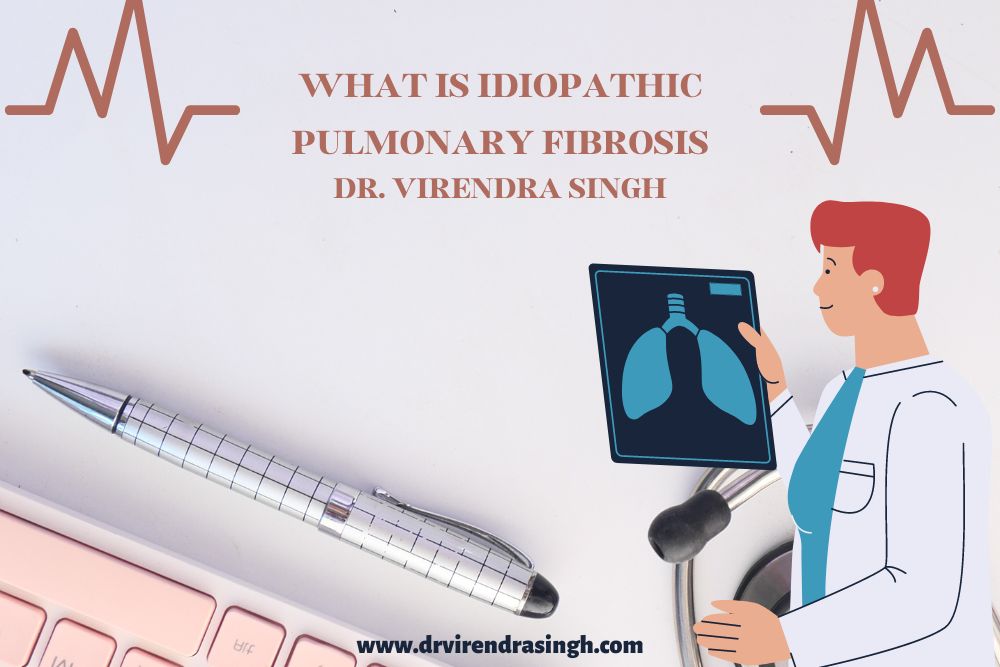
Idiopathic pulmonary fibrosis is a situation in which the lungs become scarred and breathing becomes increasingly difficult. It usually affects people who are around 70 to 75 years old and is rare in people around 50. Several treatments can help slow the progression of idiopathic pulmonary fibrosis, but there is currently no treatment that can stop or reverse lung scarring. Dr. Virendra Singh says that pulmonary fibrosis is a group of serious lung diseases that affect the respiratory system. Idiopathic pulmonary fibrosis thickens and scars lung tissue. It impacts the connecting tissue in the alveoli and the lung.
Symptoms of idiopathic pulmonary fibrosis 
IPF can be present for a long time without causing symptoms. Scarring in your lungs worsens over time, and you may develop:
- Chest pain or tightness.
- A dry, hacking cough doesn’t go away.
- Shortness of breath, especially when walking or engaging in other activities.
- Leg swelling.
- Loss of appetite.
Other symptoms of IPF include:
- Joint and muscle aches.
- Clubbing, when the tips of your toes and fingers get wider.
- Feeling more tired than usual.
- Weight loss without trying.
Risk factors of IPF-
Some people get idiopathic pulmonary fibrosis when they are revealed to something like certain medicines, pollution, or an infection. Then, some risk factors may increase your chances of developing IPF:
- Genetics. Up to 20% of IPF patients have a family member who has a similar lung disease.
- Having acid reflux disease.
- Smoking cigarettes.
- Age. Almost everyone with IPF is over the age of 50.
- Gender. About 75% of people diagnosed with IPF are male.
Idiopathic Pulmonary Fibrosis Treatment
IPF treatments will not cure the disease, but they will make it easier to breathe. So, some may prevent your lungs from deteriorating rapidly. Your doctor may suggest:
● Medicine: To treat IPF, two drugs are approved: pirfenidone and nintedanib. Scientists are still finding out exactly how they work in the lungs, but they know that these treatments can slow lung damage and scarring.
● Oxygen therapy: You breathe in oxygen through a prong or mask. It increases the amount of oxygen in your blood, allowing you to be more active and have less shortness of breath.
● Pulmonary rehabilitation: Then, you collaborate with a team of doctors, nurses, and therapists to find solutions to your symptoms.
Diagnosis of Idiopathic pulmonary fibrosis
IPF can be hard to diagnose because its symptoms are similar to other lung conditions such as chronic obstructive pulmonary disease (COPD). So, the doctor will also perform one or more of the following
tests on you, there are several types of tests which may be mentioned below:
- Exercise test.
- Chest x-ray.
- Biopsy.
- Spirometry.
- Pulse oximetry and arterial blood gas tests.
- high -resolution chest CT.
What to expect
Scar tissue in your lungs makes it difficult for your body to obtain oxygen, putting a strain on your other organs. IPF can increase your chances of developing other conditions such as:
- Heart attack.
- Stroke.
- Lung infections.
- Blood clots in your lungs.
- High blood pressure in the lungs, called pulmonary hypertension.
- Lung cancer.

